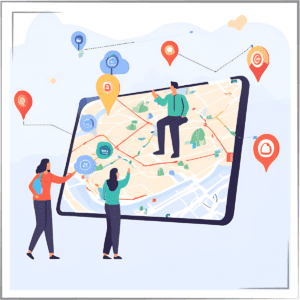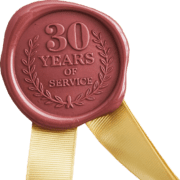Mapping the Customer Journey: Leveraging CRM for Enhanced Client Experiences
Leveraging CRM to map the customer journey can lead to more personalised interactions, increased customer satisfaction, and improved loyalty.
Mapping the customer journey allows organisations to gain insights into customer behaviours, preferences, and pain points. When combined with the power of a CRM, this mapping becomes a potent tool for enhancing client experiences and driving business growth. Leveraging CRM to map the customer journey can lead to more personalised interactions, increased customer satisfaction, and improved loyalty.
What is Customer Journey Mapping?
Customer journey mapping is the process of creating a visual representation of the steps a customer takes when interacting with your organisation. This includes every touchpoint, from initial awareness to post-purchase support.
Benefits of Customer Journey Mapping:
- Identifies Pain Points: Highlights areas where customers may experience frustration or obstacles.
- Enhances Understanding: Provides deeper insights into customer needs and expectations.
- Improves Engagement: Helps tailor interactions to meet customers at each stage of their journey.
- Drives Strategy: Informs business decisions and strategies based on customer behaviours.
Leveraging CRM in Customer Journey Mapping
A CRM system is a treasure trove of customer data that can significantly enhance the customer journey mapping process.
- Data Collection and Integration
CRMs collect data from various sources, providing a comprehensive view of customer interactions.
- Unified Data Source: Consolidate data from sales, marketing, and customer service into one platform.
- Real-Time Updates: Access up-to-date information for accurate mapping.
- Segmenting Your Audience
Use CRM data to segment customers based on behaviours, preferences, and demographics.
- Personalisation: Tailor the customer journey for different segments.
- Targeted Strategies: Develop specific approaches for each customer group.
- Identifying Touchpoints
Analyse CRM data to identify all customer touchpoints across multiple channels.
- Omni-Channel Visibility: Understand interactions via email, social media, phone calls, and in-person meetings.
- Consistency: Ensure a seamless experience across all channels.
- Tracking Customer Behaviours
Monitor how customers move through the sales funnel and interact with your brand.
- Journey Analytics: Use CRM analytics to track engagement and conversion rates.
- Predictive Insights: Anticipate customer needs and behaviours.
- Enhancing Customer Experience
Utilise insights from the CRM to improve each stage of the customer journey.
- Proactive Support: Address issues before they escalate.
- Feedback Mechanisms: Collect and act on customer feedback.
Steps to Map the Customer Journey Using CRM
Step 1: Define Customer Personas
Create detailed profiles of your typical customers using CRM data.
- Demographics: Age, location, industry.
- Behaviours: Purchase history, interaction preferences.
- Needs and Goals: What are they trying to achieve?
Step 2: Outline the Stages of the Journey
Identify the key stages your customers go through.
- Awareness
- Consideration
- Decision
- Purchase
- Retention
Step 3: Identify Touchpoints at Each Stage
Map out where and how customers interact with your organisation at each stage.
- Digital Channels: Website visits, social media engagement.
- Direct Interactions: Sales calls, customer service inquiries.
- Marketing Efforts: Email campaigns, advertising.
Step 4: Analyse Customer Emotions and Motivations
Understand what customers are feeling and thinking at each touchpoint.
- Pain Points: What frustrations do they encounter?
- Delights: What exceeds their expectations?
Step 5: Identify Opportunities for Improvement
Use your findings to enhance the customer journey.
- Process Optimisation: Streamline procedures to reduce friction.
- Personalisation: Offer tailored solutions and communications.
- Resource Allocation: Invest in areas that impact customer satisfaction the most.
Benefits of Combining CRM with Customer Journey Mapping
- Enhanced Personalisation: Deliver customised experiences that resonate with individual customers.
- Improved Customer Retention: Satisfied customers are more likely to remain loyal.
- Increased Revenue: Personalised experiences can lead to higher conversion rates.
- Data-Driven Decisions: Make informed choices backed by real customer data.
Challenges and How to Overcome Them
Data Silos
Information scattered across different systems can hinder effective mapping.
- Solution: Integrate all customer data into your CRM for a unified view.
Complex Customer Journeys
Modern customer journeys are rarely linear and can be complex.
- Solution: Use advanced CRM analytics to capture and interpret complex patterns.
Keeping Data Up-to-Date
Outdated information can lead to inaccurate mapping.
- Solution: Implement processes for regular data cleansing and updates.
Ready to transform your customer experience? Our Melbourne-based team specialises in helping mid-sized Australian enterprises leverage CRM systems for effective customer journey mapping. Contact us today to discover how we can support your business in delivering enhanced client experiences.



